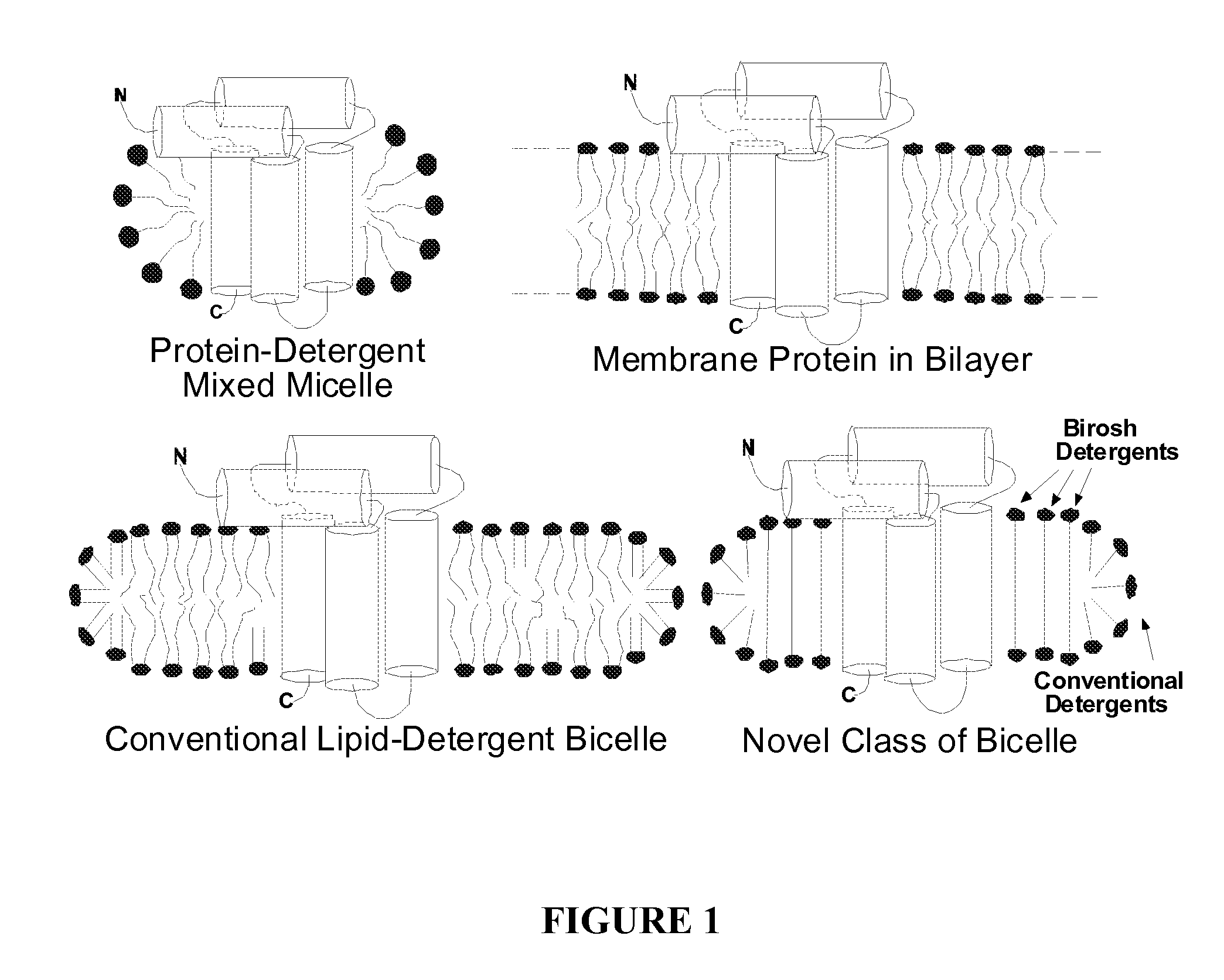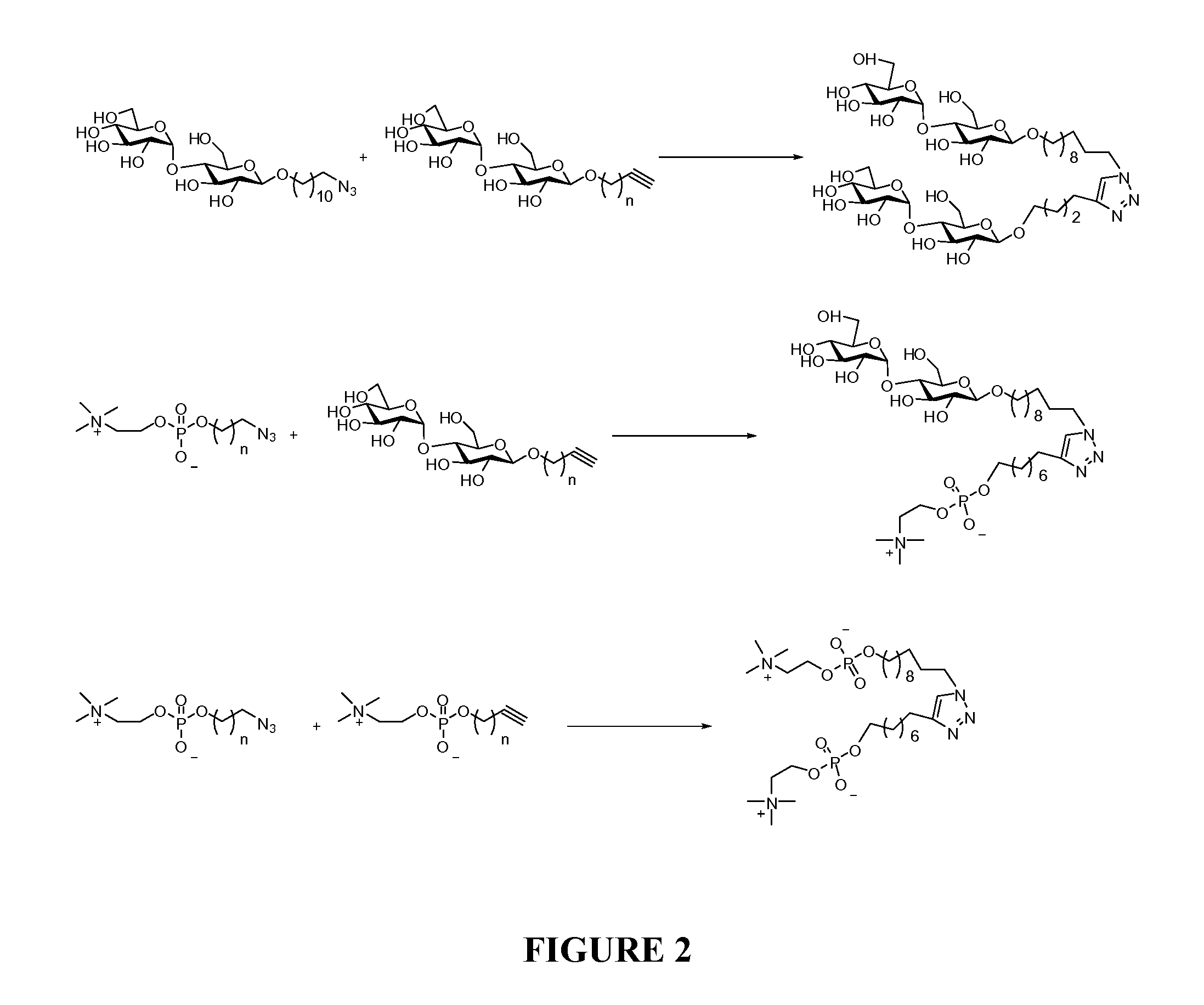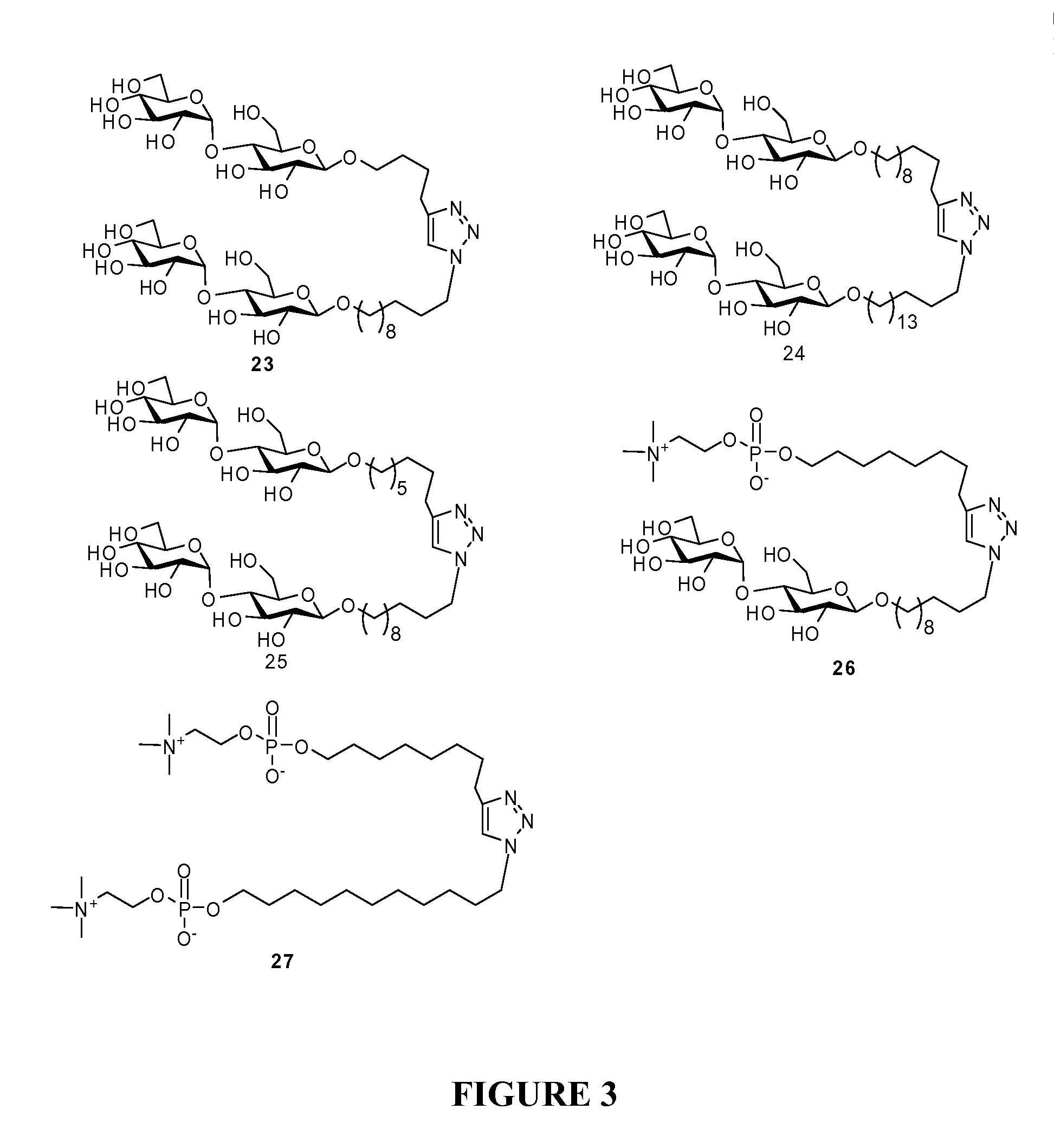Maltoside and Phosphocholine Derivatives, Uses thereof and Methods of Preparing Artificial Lipid Structures Thereof
a technology of phosphocholine and maltoside, which is applied in the direction of sugar derivates, group 5/15 element organic compounds, lactose production, etc., can solve the problems of inability to characterize and hampered the study of cellular membrane-associated proteins and membrane-bound proteins
- Summary
- Abstract
- Description
- Claims
- Application Information
AI Technical Summary
Benefits of technology
Problems solved by technology
Method used
Image
Examples
example 1
[0052]Saccharide derivatives were synthesized. As exemplary compounds for this example, maltosides were selected as the saccharide. Substituted maltosides could have also been used in an equivalent manner. Furthermore, other mono- and disaccharides could also be employed in a like manner to arrive at the corresponding alkyne and azide derivatives shown here. diisobutyl aluminum hydride
Reduction of Methyl Ester to Alcohol:
[0053]To a cooled solution (−60° C.) of methyl ester (10 g, 1 or 3) in dry dichloromethane (DCM, 300 mL) was added DIBAL-H (diisobutyl aluminum hydride, 2.5 eq., 2M solution in hexanes) in a dropwise manner. The resulting reaction mixture was allowed to warm to 0° C. over 4-5 hrs. (See, Scheme I, below). A saturated aqueous solution of sodium potassium tetratatrate (300 mL) was then added to the reaction mixture and was kept stirring overnight. The organic phase was separated, dried over anhydrous sodium sulfate (Na2SO4) and concentrated under reduced pressure to ob...
example 2
[0058]Azide and alkyne derivatives of phosphocholine molecules having a variable length carbon chain were prepared as follows. Following the standard procedure, two phosphocolines, 21 and 22, with azide or alkyne functional groups were synthesized. (See, Scheme VI, below).
[0059]Generally, this procedure was accomplished as follows. To a 5 L, 3-necked round bottom flask provided with an overhead stirrer, temperature probe, pressure equalized dropping funnel with drying tube and a dry ice / methanol bath, was added 112 ml POCl3 and 100 ml THF which was stirred for 10 minutes. In a 2-L Erlenmeyer, 1000 ml THF, 1 mole starting alcohol, and 153 ml triethylamine were mixed. The solution was transferred to the dropping funnel and the addition begun. Once the addition is complete, the flask is stirred for 30 minutes. The flask may also be warmed by stirring overnight. This yields the intermediate alkyl dichlorophosphate.
[0060]Next, to a 2 L Erlenmeyer was added 1500 ml THF, 73 ml ethanolamine...
example 3
[0063]Alkyne and azide derivatives were combined to form new molecules having novel properties. In the present example, the maltoside and phosphocoline derivatives prepared in Examples 1 and 2, above, were reacted together to form the resultant 1,4-disubstituted [1,2,3]-triazole compounds. To a round bottom flask with the above substrate pair in 10% solution in water (some MeOH is added if the solution is cloudy) were added CuSO4 (0.1 e.q.) and sodium ascobate (0.2 e.q.). The reaction mixture was stirred overnight and purified by a C-18 column the next day with methanol and water as mobile phase to afford the desire products. (See, Scheme VII, below).
[0064]The corresponding critical micelle concentration (CMC) concentration by following standard procedures. The results revealed that the CMC of compound 25 was about 1.42 M. Based on these preliminary results, it appeared that the molecules with phosphocoline units possess a higher water solubility than their corresponding maltosides....
PUM
| Property | Measurement | Unit |
|---|---|---|
| Length | aaaaa | aaaaa |
Abstract
Description
Claims
Application Information
 Login to View More
Login to View More - R&D
- Intellectual Property
- Life Sciences
- Materials
- Tech Scout
- Unparalleled Data Quality
- Higher Quality Content
- 60% Fewer Hallucinations
Browse by: Latest US Patents, China's latest patents, Technical Efficacy Thesaurus, Application Domain, Technology Topic, Popular Technical Reports.
© 2025 PatSnap. All rights reserved.Legal|Privacy policy|Modern Slavery Act Transparency Statement|Sitemap|About US| Contact US: help@patsnap.com



